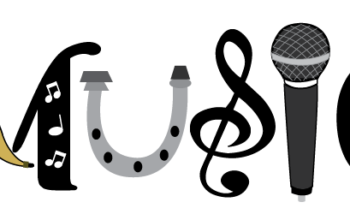Sean Davidson
Opinions Editor
NCHS students may recall the 2014 Perannos yearbook – the one covered in “Hello my name is” stickers in a spectrum of colors, fonts, and personalities – which sparked the “who am I?” question schoolwide. At the dawn of a student’s high school career, the structure of their grade’s social strata from middle school days is inevitably destabilized, and therefore allows more freedom for exploration of oneself and the formation of new associations. In this search for identity, new sects of people are formed, bound together in what is known as a “subculture”, or what parents commonly assume to be a “phase.”
Subcultures may provide a sense of belonging, through the binding together of people under a common interest, but they are also subject to ridicule and stereotyping. Our generation’s definitive subculture is the “Hipster”, which is not rare in high school. The Hipsters are routinely lampooned by people and the media as a predictable and ignoble people who adopt a prefabricated identity because they are dissatisfied or bored with their own, but what is not correctly represented is that subcultures are not made up of clones living identical lives, but of individuals who share common interests. This “phase system” is inherently human, and in the scheme of things can prove to be developmentally valuable. People learn and mature from their experiences, and this age-of-exploration yields much new knowledge and many lessons learned.
For the new freshman class, NCHS is an unusual frontier laid before them. Curiosity and personal exploration beckon and students begin to question themselves and their surroundings. Not only is it common to take up a new sport, rise from relative mediocrity to become an academic achiever, or have new tastes in clothing and music; there are also questions raised that some may not have seriously considered before; such as the question of political beliefs, religious beliefs, and sexual orientation. Through these ventures, many possible avenues of association are opened; there are dozens of people to befriend and dozens of personas you may assume or reject, in due course.
In these pursuits, it is important to keep in mind that although you may embrace ideas, activities, and looks, it does not mean that at any given time you will “become” any of those things. One is first oneself, with a core set of beliefs and experiences which are deeply ingrained. This exploration is in no way fundamentally defining, it allows for much freedom in how one chooses to express oneself, and you may not even have to put forth much effort into personal expression. You could be involuntarily associated with a subculture by judgment of others, or you may simply merge with a subculture because the fit is so natural. There are, on the other hand, those who pursue conscious exploration, heavy with emulations and outside influences. Subcultures should neither be considered definitive of persona nor be considered exclusively conscious or inherent. In many cases they are merely phases we are going through – do not let your parents read this – in other cases they are just reflections of who we already are.
In high school, at the moment, the most common subculture is the Hipster. The movement, even at the twenty and thirty-year-old level, is defined as an “extended youth” movement, in which people are still constantly questioning the world around them and their own purpose. Such a movement lends itself to adolescents who have the same questions, and value finding their essential being above convenience or conformity.
It is not very difficult to point out a Hipster when you see one. They are portrayed – be it by memes, jokes, television, or elsewhere in the media – with a predictable appearance and set of interests. The essential Hipster garb, according to the stereotypes, consists of many thrifted items; flannels, indie band or “ironic” t-shirts, thick-rimmed Buddy Holly glasses, vintage Polaroid cameras, and other items that denote cultural eliteness. It does not matter whether or not Hipsters are like the stereotypes, but people must realize that they are not all the same because of a label. It is possible to maintain individuality to some degree in any subculture. It would be nearly impossible for every member of a subculture to be the same, considering subcultures are not finite; there is no one “way”, no hard set of laws for its members to follow. Thus, individuality must exist within a subculture. While Hipsters may be bound together in their common disdain of the mainstream world and have similar ways of expressing it, there are divisions that exist among themselves which establish their individuality; two hipsters may not agree on the best indie band or the best coffee shop or what “good irony” is, or one may prefer t-shirts while another prefers flannels.
In the case of the Hipster, the pursuit of identity is much more vague in high school than it is in the real world. I highly doubt that every teenage hipster works as a barista, drinks Pabst Blue Ribbon, and boasts a Henry David Thoreau style neck-beard. So, I think it is safer to say one is dabbling in hipster ideas rather than becoming one. After all, in ten years after high school one may not be anything like a hipster anymore, and what seemed to be their identity was nothing but a bout of self-exploration that never materialized into anything permanent.
What is still a mystery is how far can an exploration into a subculture penetrate someone’s identity? How far below the surface can it reach? Are there influences that “stick” in a more permanent manner? In some cases- sure, but most likely only those that resonate with your core being. There may be some temporary pain of ridicule from those who arrogate to themselves the right to judge those who dare to venture the ideals of subcultures, but this pain is rarely permanent.
So, be a Punk or an Anarchist or even a hipster for a month and see how it feels. You have no qualified boss to reprimand you or job to lose. If the parents complain, just tell them that it is a phase you are going through, teenage angst, temporary insanity. They will understand. They’ve already been down this road.




